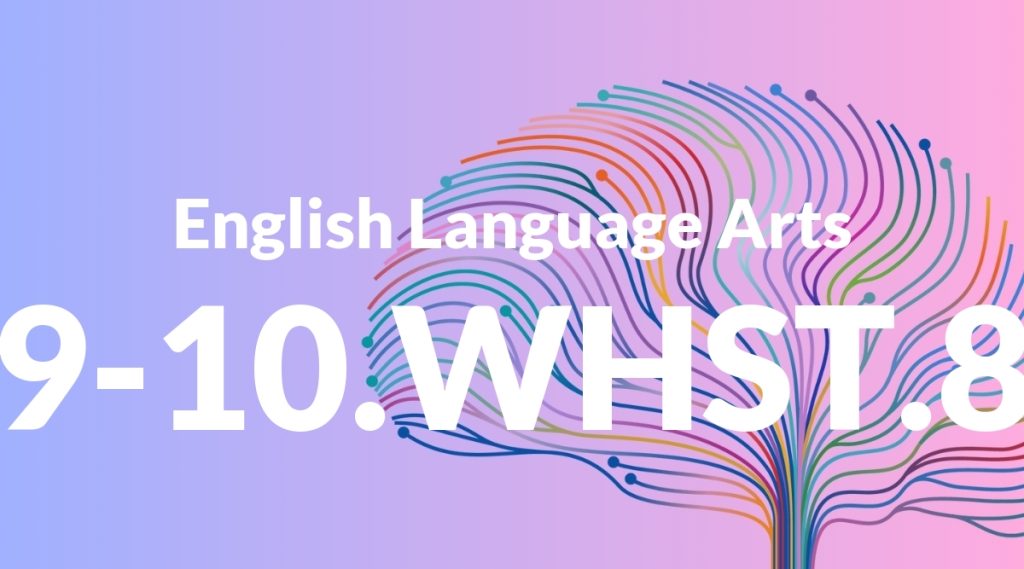Standard: 9-10.WHST.8 – Gather relevant information from multiple authoritative print and digital sources, using advanced searches effectively; assess the usefulness of each source in answering the research question; integrate information into the text selectively to maintain the flow of ideas, avoiding plagiarism and following a standard format for citation.
Grade level: Grade 9-10
Subject: English Language Arts
Domain: Writing: History, Science & Technical Subjects
Teacher Overview
This standard emphasizes the importance of gathering and using information from authoritative sources to support research and writing. It is crucial for students to learn how to conduct advanced searches, evaluate the usefulness of sources, and integrate information seamlessly into their writing while avoiding plagiarism. Mastery of this standard prepares students for more complex research tasks in higher education and professional settings. Before tackling this standard, students should be comfortable using search engines and databases, have a basic understanding of credible sources, and know the importance of citations to avoid plagiarism.
After mastering this standard, students will be able to synthesize information from various sources, enhance their analytical skills, and produce well-organized, evidence-based writing across different subjects.
Common Misconception 1
A common misconception is that all information found online is equally credible. This is incorrect because the internet contains a mix of reliable and unreliable sources. Students need to learn how to critically evaluate the credibility of their sources.
Intervention 1
To address this misconception, teach students to check the author’s credentials, publication date, and the site’s domain (e.g., .edu, .gov) to determine the reliability of a source.
Common Misconception 2
Another misconception is that paraphrased information does not require citation. This is incorrect because paraphrasing still involves using someone else’s ideas, which must be credited to avoid plagiarism.
Intervention 2
To remediate this, explain that even when paraphrasing, students must cite the original source. Provide examples and practice exercises to reinforce this concept.
Prerequisite Knowledge
Students should have a basic understanding of how to use search engines and databases, recognize credible sources, and understand the importance of citing sources to avoid plagiarism.
Subsequent Knowledge
Students will develop the ability to synthesize information from various sources, enhance their analytical skills, and produce well-organized, evidence-based writing across different subjects.
Instructional Activities
- Conducting a mock research project where students gather information from multiple sources and create a bibliography
- Interactive lessons on using advanced search techniques in databases and search engines
- Group activities that involve evaluating the credibility of different sources
- Writing assignments that require proper citation of paraphrased and quoted material




